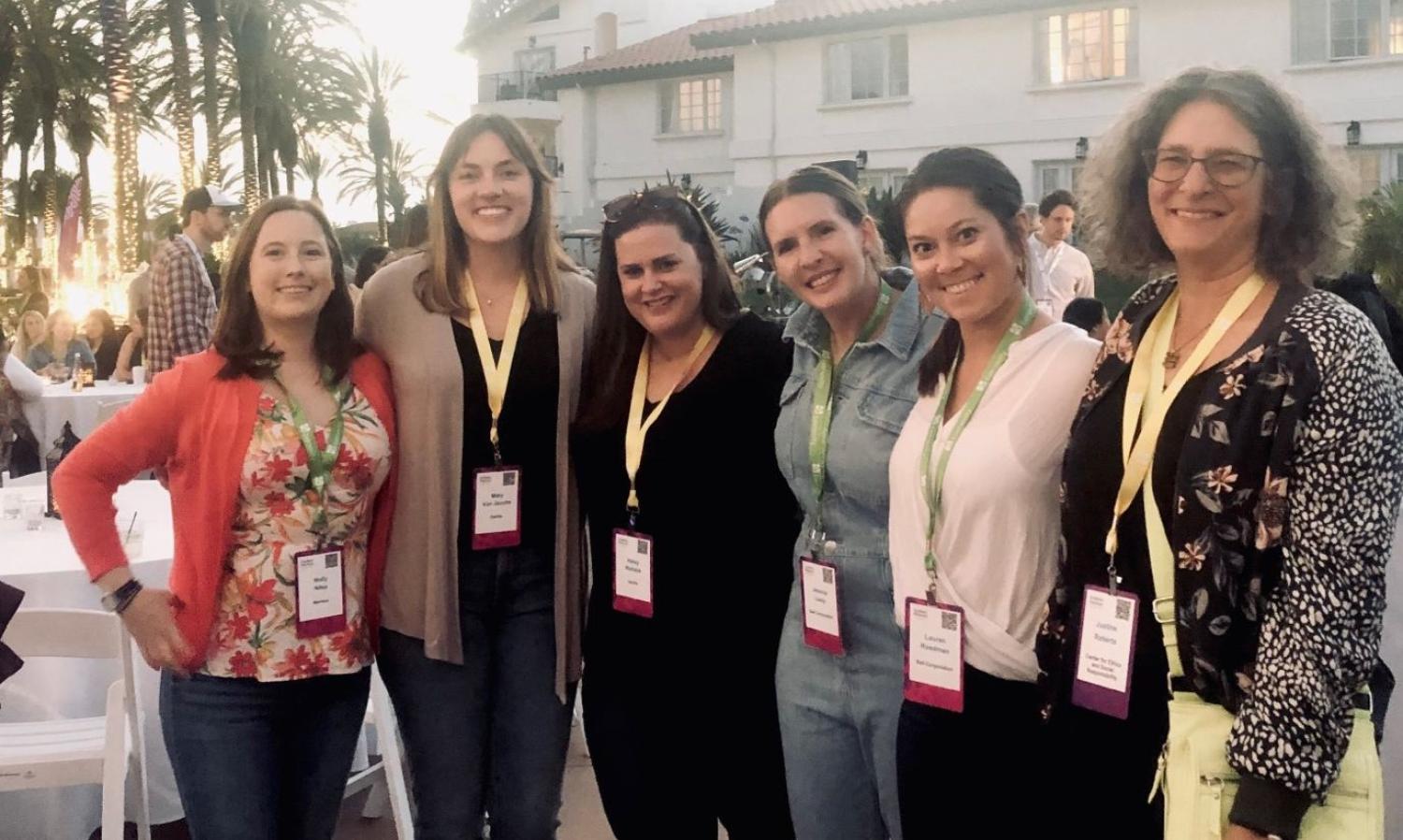
Molly Nitka, Workiva, Mary Van Jacobs, DaVita, Haley Wallace, DaVita, Jessica Leary, Ball Corporation, Lauren Roadman, Ball Corporation, Justine Roberts, Leeds School of Business.
The recent Goodness Matters conference, organized by Benevity, highlighted best practices in community engagement, corporate philanthropy and volunteerism, and pointed to emerging trends.
During the pandemic, our individual and collective stamina and resilience has been challenged, and organizations have gone through some significant adaptations. In responding to the changing operating environment, business leaders have piloted new strategies and identified opportunities to rethink best practices.
Employee Driven Investment
During the pandemic, volunteerism became more local, dispersed, and individual. The way people made charitable contributions also shifted. Some businesses have responded by allowing employees to have a greater say in corporate decisions about social impact work. By redesigning their matching gift programs to allow employees to select any organizations that matter to them, and allowing for year-round matching, these companies are allowing employees to lead.
Benevity data shows that more individuals contributed both time and treasure in 2022 than pre-pandemic. The number of individuals making financial donations and the total dollars donated both rose. The number of employee volunteer hours, total number of employees who are volunteering, and the number of causes they are contributing to, are all also up compared to 2019.
The shift to a responsive model for social impact and community engagement programs builds on these trends. By supporting employee priorities and interests, companies like Nike and Apple are able to enhance employees’ sense of belonging. By allowing for multiple ways to engage employees, companies are recognizing that purpose matters to their workforce.
Centering Communities
The second trend is closely related to the first and is the idea of trust based philanthropy. In this model, companies acknowledge that they do not have all, or even the best, answers or solutions to community issues and instead go into the grant making and volunteer process sharing decision making power with their nonprofit partners. Some companies have shifted to open grants that can be used for anything the nonprofit identifies as a priority, and grant panels that include community stakeholders as equal voting members, among other changes.
Skills based volunteerism is another idea that has been gaining traction. This is the approach of matching employee skills and interests to the needs of nonprofit partners. Companies like Zoom are using this approach to allow employees to use their skill set to make a difference and build the capacity of partner organizations. The idea of matching nonprofit partner needs with employee talents shifts volunteerism from mobilizing large numbers all at once, which can put pressure on partners to identify or even create appropriate projects, to targeted support for partner identified needs.
Small Acts of Kindness
Covid necessitated a shift to virtual volunteerism, as well as to volunteerism that supports individuals and local communities, not just organizations. Companies like PagerDuty are now encouraging employees to record those actions and count them toward their volunteerism at work. Whether it is shoveling a neighbor's sidewalk, or coaching a local sports team, by counting these contributions to the community, companies can meet employees where they are.
The benefits to companies include making volunteerism more accessible to newcomers, increasing affiliation and fostering a sense of purpose. The data shows that 82% of millennials consider CSR in evaluating their employers. In the midst of the Great Resignation, social impact programs have a real and measurable positive influence on key business metrics such as lower turnover, better job performance and fewer sick days.
Demand for Data
There is growing interest at the board level in ESG, and that is fueling the demand for reporting. Companies are also increasingly interested in going beyond risk management and compliance to showing their value, and their positive social and environmental outcomes. The question is how to move from tracking participation rates, volunteer hours and activities to the business impact, benefits to nonprofit partners and contributions to people and planet?
Data collection strategies must improve so that businesses can understand their users, make good decisions and ensure that their programs are relevant. There is a need for better data visualizations and dashboards that combine quantitative and qualitative information. Dashboards also need to be up to date and easy to use so that everyone across a business can understand the work of CSR and ESG professionals, and their impact.
Optimism, Duty and Urgency
As we emerge from the pandemic, the problems we are facing can seem so large it is hard to know how to solve them. CSR and ESG professionals are driving systemic change across companies. Their work influences HR, marketing and communications, finance, operations and more. It is a hub that has the potential to bring people together and which puts practitioners at the table with all other business issues. Creating a more systemic approach that builds alliances across business functions will accelerate the pace of change and allow us to rise together.
Join the Work
All of the incredible professionals pictured above are alumni of the Certificate in CSR executive education program offered by Leeds, and working on community engagement and CSR. Professionals who are interested in CSR and ESG can learn more about the Certificate in CSR executive education program.
Companies interested in getting involved in supporting the next generation of business leaders and changemakers can reach out to CESR to learn more about our programs and opportunities for collaboration.


